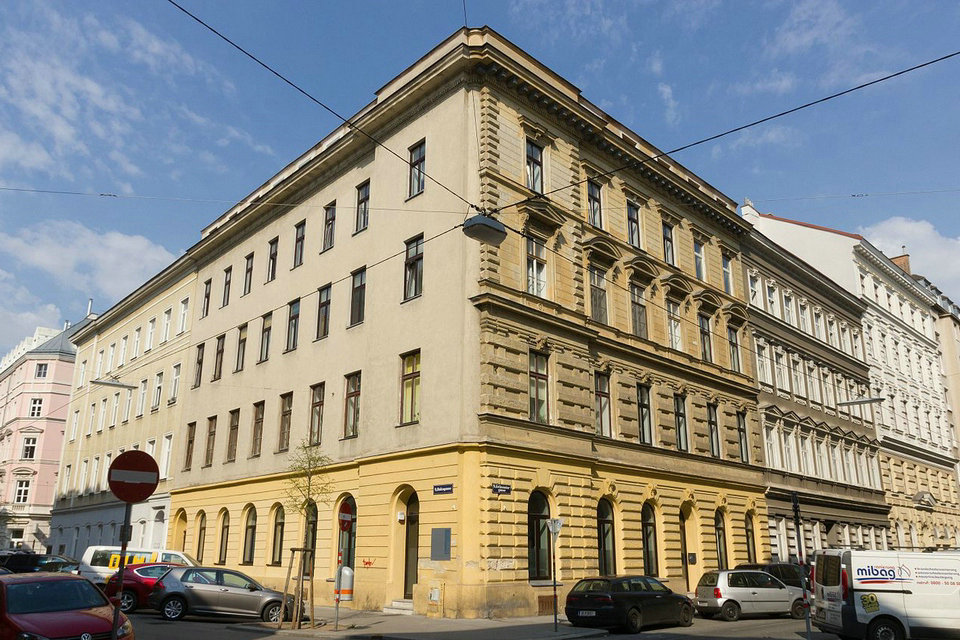Entustuckung (sometimes also Abstuckung) is the deliberate elimination of stucco decorations on buildings. From about 1920 to 1975, mainly in Germany of facades and interiors from the early days of the perceived as “lying” gypsum stucco decor was knocked off. The facades should henceforth no longer imitate elaborate sandstone facades, but show their sparing, then was usually smooth plastered.
Beginnings
The theoretical basis for the de-stemming was laid before the First World War. From the circles of the art and architectural reform movement around Adolf Loos, Hermann Muthesius or Paul Schultze-Naumburg massive criticism of the partly industrially manufactured decorative elements in imitated Gothic, Renaissance, Baroque, Rococo or Classicism styles was already practiced around 1900, with which the Wilhelminian period the facades were decorated. Above all, the stucco on tenements was branded as concealment of miserable social conditions. On the artistic level, a large number of stucco façades on buildings of the epoch of around 1880 to 1910 were influenced by eclecticism, ie by the use of eclecticism. H. from the mixture of several historical styles on a building. After 1910, the mixture of styles was seen as frivolous and the historic stucco façade increasingly disqualified. This attitude became a universal feature in German architectural criticism until the 1960s. However, the first intentionally freed of building decoration construction can apply to an industrial construction: Peter Behrens was in 1911 of the only a few years previously built “Old factory for railway materials” AEG in the Voltastraße in Berlin-Gesundbrunnen remove the executed in clinker bricks decor.
De-stemming and new building
With the active removal of the decor in a larger style, however, was only begun in the 1920s in Berlin. Pioneers of the de-staging were architects of the new building like Erich Mendelsohn or the brothers Hans and Wassili Luckhardt, but also older architects like Peter Behrens or Richard Riemerschmid. Some of their façade changes were quite remarkable in terms of design and were perceived as independent buildings by the respective architects. From Berlin, the Entstuckung spread, promoted by advocating articles in the most important architecture magazines, as an urban development model throughout Germany.
Depletion and “defamation” at the time of National Socialism
During the period of National Socialism, the model of deconstruction lived on and was propagated mainly for small towns and villages. As part of the so-called “defamation” an attempt was made to liberate entire streets, squares and ensembles of buildings from the late 19th century. A central role in this effort came to the architect and home guard Werner Lindner. A showcase project of the “defamation” was the Semlower road in Stralsund.
High point in the 1950s
However, their depletion reached their quantitative climax only after 1945, when in almost all German cities the forms of the Wilhelminian period were declared to be in conflict. In Berlin-Kreuzberg alone, one of the largest Gründerzeit quarters in Europe, the stucco was knocked down by about 1,400 houses by 1979. In many places, however, stucco façades on buildings that had survived the war slightly damaged, but also a security risk, because again and again facade parts crumbled down and the owners for a professional restoration of facades in the immediate post-war period had no financial means.
Remarkably, during this time the de-stemming was mass-produced in both western and eastern Germany, while in neighboring countries, such as France or Italy, the phenomenon was and is largely unknown.
End of Demolition since the 1960s
Since the early 1960s, criticism against the Entstuckung began to rain. Already in 1964, the Berlin architect and urban planner Werner Düttmann turned against the massive knocking off of the stucco decorations. In this context, the appearance of the polemical illustrated book The murdered city of the journalist Wolf Jobst Siedler and the photographer Elisabeth Niggemeyer in 1964 is of particular importance. The critique of détente was initially based on the revaluation of the achievements of historicism in the field of architecture. In addition, it was criticized that buildings that were once built with a stucco facade, as a result of the Entstuckung lose their historical authenticity, d. that is, they are no longer immediately recognizable as buildings of a particular architectural epoch. For this reason, stuccoed houses are often erroneously assigned to the 1950s by laymen because of their smooth plaster facades. From a purely aesthetic point of view, too, disjointed buildings often seem unsatisfactory, since the facades were conceived as bearers of ornamentation and often appear disproportionate after their removal due to the loss of their structure. Since the 1970s, the Wilhelminian era was increasingly rediscovered by the preservation of monuments, but also in the general public. As a result, the Entstuckung was prohibited in many places by the facades have been listed. Partly also entstuckte facades were again uncovered or reconstructed.
Source from Wikipedia
